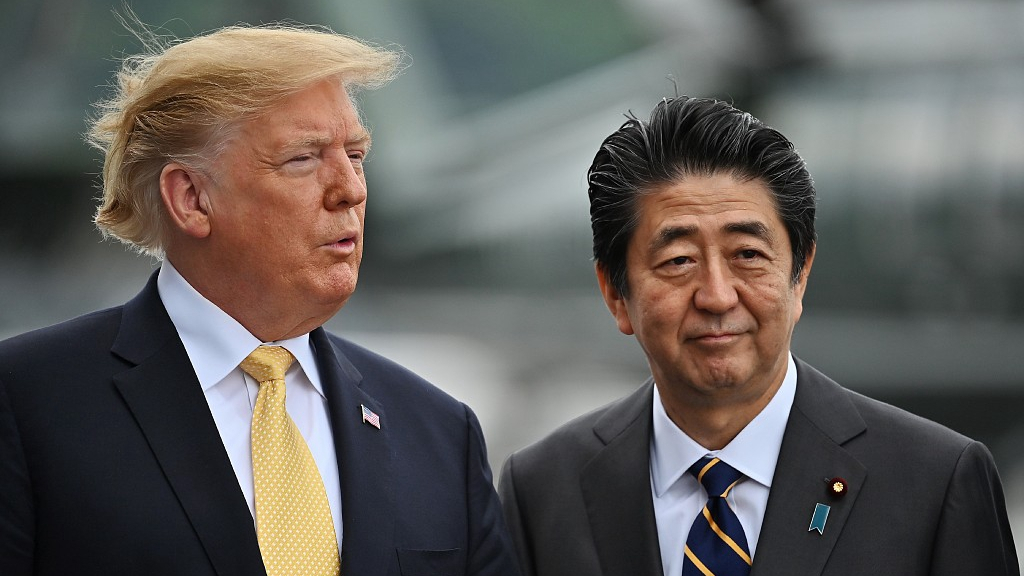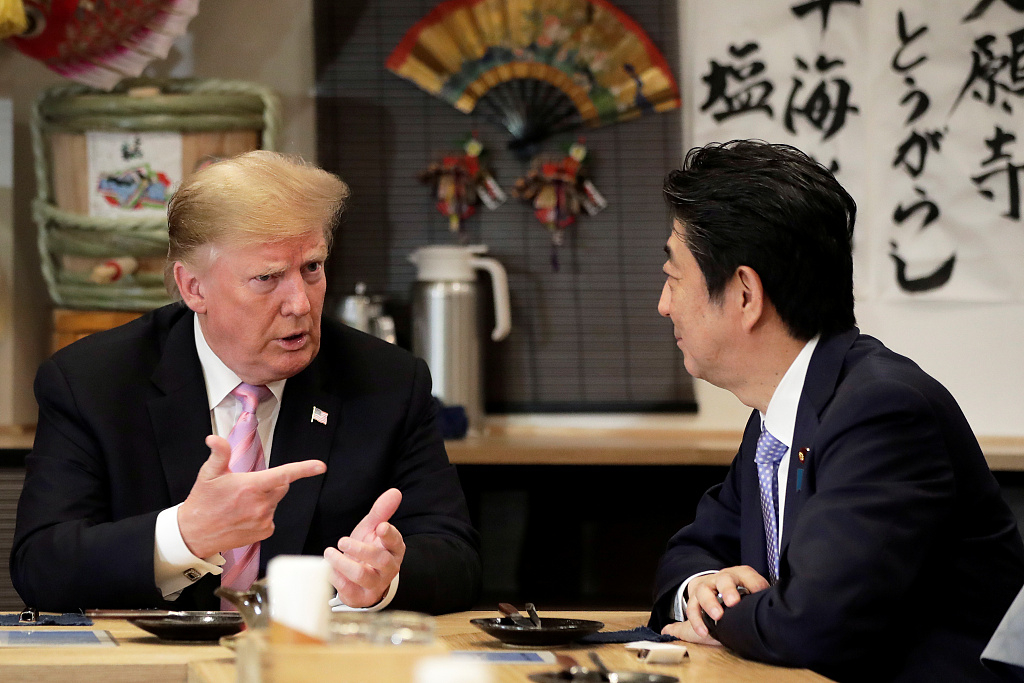
TV Show
22:16, 29-May-2019
How could U.S., Japan shrink trade imbalance?
World Insight with Tian Wei
03:39

The U.S. President Donald Trump wrapped up his four-day visit in Japan. This spring is important for Japanese Prime Minister Shinzo Abe and Trump as they have met twice. The first was in April in Washington, the second was in May in Tokyo. There is no doubt that the trip is a light and breezy show of friendship, however, there are still deep divisions over issues like trade.
Japan's trade deficit against the U.S. in 2018 was around 67.6 billion U.S. dollars, the fourth largest after China, Mexico and Germany. Still, Japan finds its auto industry threatened with 25 percent tariffs, and the repeated U.S. threat was greeted with a rare sharp rebuke from Japanese business leaders.
The U.S. is also worried about American farm products after Trump withdrew from the Trans-Pacific Partnership two years ago. The trade pact is now led by Japan and includes 11 nations in the Asia Pacific region. The U.S. wants Japan to cut agriculture tariffs.
Both automobile and agriculture are crucial for Japan; so how much will Japan be able to compromise? Visiting Professor at Thammasat University Ken Jimbo thinks agriculture is easier to deal with because Japan had already negotiated the TPP before Trump administration took charge.
At the TPP, Japan together with the U.S. and other 11 countries, made the basics in a compromise. So he said Japan is ready to accept TPP standards that have been agreed upon within the U.S.

U.S. President Donald Trump talks with Japanese Prime Minister Shinzo Abe during a couples dinner with first lady Melania Trump and Abe's wife Akie in Tokyo, Japan, May 26, 2019. /VCG Photo
U.S. President Donald Trump talks with Japanese Prime Minister Shinzo Abe during a couples dinner with first lady Melania Trump and Abe's wife Akie in Tokyo, Japan, May 26, 2019. /VCG Photo
But Jimbo believes the tricky part is the auto industry. Trump administration suggests that Japan should limit the amount of export to the U.S. for the protection of the U.S. auto industry. As Japan already has zero tariffs towards the U.S., Jimbo doesn't think, "Japan can do something about tariff reduction part."
In terms of limiting the amount of export to the U.S., he thinks the U.S. may take time to arrange how to negotiate with Japanese domestic automobile industries.
President Trump insisted that he was set on reducing the trade imbalance with Tokyo; he even pressed Abe to even out a trade deficit with Washington in a joint press conference. He said now nothing would be finalized with Japan on trade before the country's Upper House elections in July.
Will the current White House satisfy if Tokyo under the Abe administration is trying to make up the trade deficit with the purchase of other military products?
Jonathan Pollack, a non-resident senior fellow in the Center for East Asia Policy Studies, thinks that Trump sees the U.S. weapon industry as a key factor, but in any sense though, it's not the answer or solution.
Any deal with Japan could have been reflected in the TPP agreement, and it would have given easy access to the Japanese market. But Trump doesn't like that. According to him, Japan is a major investor in U.S. automotive production, and that's why Trump is frankly using tariffs as a threat.
(If you want to contribute and have specific expertise, please contact us at opinions@cgtn.com.)

SITEMAP
Copyright © 2018 CGTN. Beijing ICP prepared NO.16065310-3
Copyright © 2018 CGTN. Beijing ICP prepared NO.16065310-3